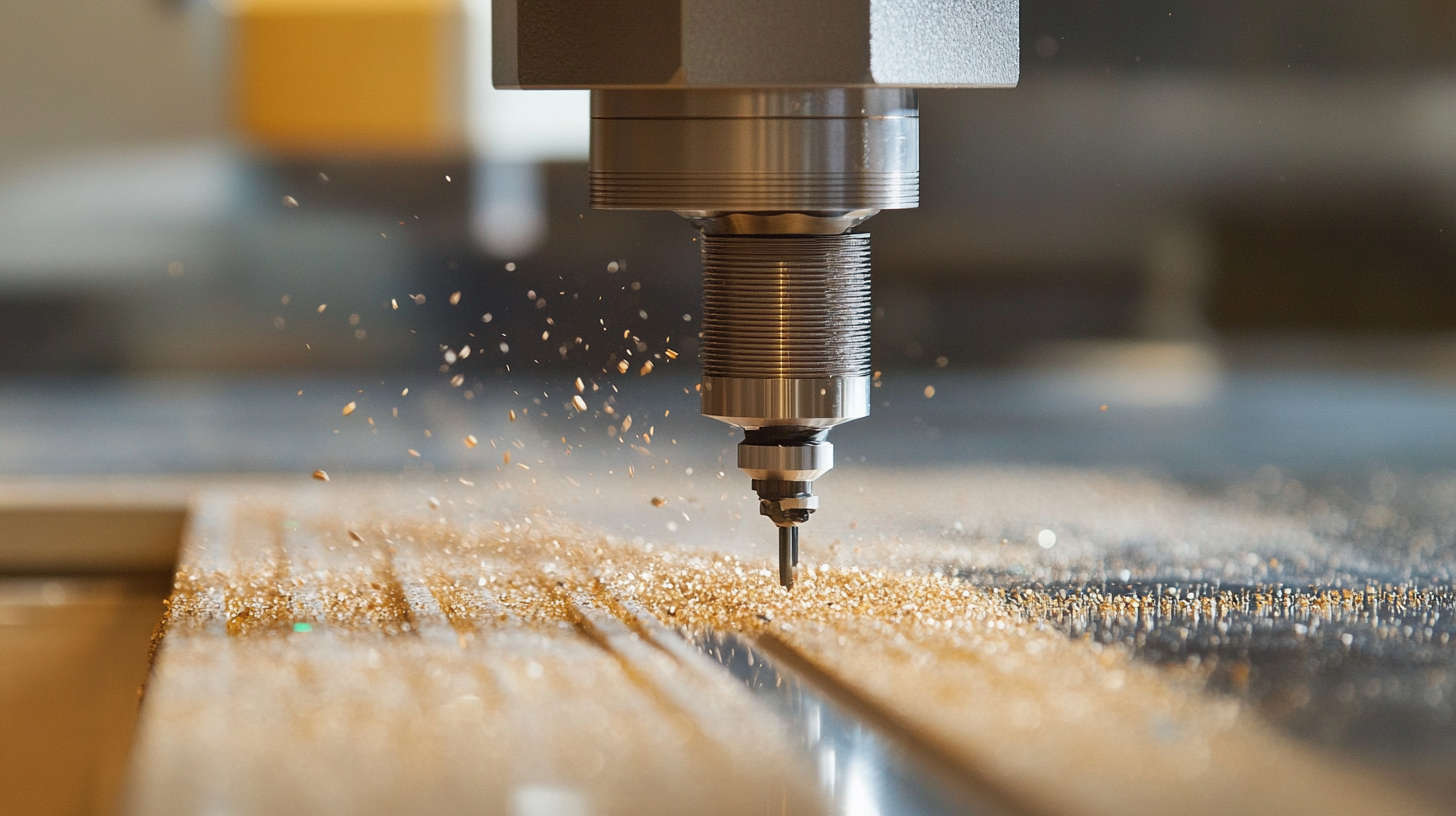As we look towards 2025, the landscape of global procurement is rapidly evolving, driven by technological advancements and innovative designs in various industries. One area that is set to experience significant transformation is the realm of router bits. These essential tools, which play a crucial role in shaping, cutting, and crafting materials across woodworking, metalworking, and other manufacturing processes, are now poised for revolutionary innovations that could dramatically enhance their performance and versatility.
In this exploration of future innovations in router bits, we will delve into emerging trends, materials, and technologies that promise to redefine how these tools are designed and utilized. From enhancements in durability and precision to the integration of smart technology, the upcoming changes in router bits could streamline processes, reduce waste, and enable new capabilities in production. Join us as we navigate the anticipated developments in this pivotal tool and their implications for global procurement strategies in the coming years.

As we look toward 2025, the future of router bit design is poised for a transformation driven by emerging technologies. Innovations in materials science, such as the development of advanced carbide composites, are enhancing the durability and cutting efficiency of router bits. These new materials not only extend the lifespan of the bits but also allow for sharper edges and greater precision in woodworking tasks. This shift is expected to revolutionize the industry, providing craftsmen with tools that can handle a wider range of materials, from softwoods to dense composites. Moreover, the integration of smart technology into router bit design is on the horizon. With the advent of IoT (Internet of Things), router bits equipped with sensors could offer real-time feedback on wear and performance. This data-driven approach would enable users to optimize their tools for specific tasks, leading to higher quality finishes and improved overall productivity. Filtration systems embedded within the bits could also manage debris more effectively, ensuring cleaner cuts and minimizing the chance of damage to the workpiece. Additionally, innovative manufacturing techniques, such as 3D printing, are set to reshape the production of router bits. This technology can facilitate the creation of complex geometries that traditional machining cannot achieve. Customization will become more accessible, allowing professionals to order router bits tailored to their exact specifications, ultimately enhancing the user experience and expanding creative possibilities in woodworking. As 2025 approaches, we stand on the cusp of a new era in router bit technology, where enhanced performance and smart design converge for a better woodworking experience.

The router bit manufacturing industry is poised to undergo significant transformations in the coming years, particularly as sustainability trends continue to reshape production processes. In 2025, manufacturers will need to adopt eco-friendly practices that not only reduce environmental impact but also appeal to a growing demographic of eco-conscious consumers. This shift towards sustainability is becoming a critical differentiator in a competitive market, driving innovation in materials, production techniques, and overall product life cycles.
One notable trend is the development of router bits made from sustainable materials. Manufacturers are increasingly exploring alternatives to traditional metals and plastics, turning to biodegradable or recyclable options that decrease their carbon footprint. Innovations such as composite materials that blend recycled resources are gaining traction, allowing for performance quality that rivals conventional router bits while being kinder to the planet.
Another pivotal change is the integration of renewable energy sources within manufacturing processes. By utilizing solar, wind, or bioenergy, companies can significantly lower their greenhouse gas emissions during production. Additionally, advanced manufacturing technologies like 3D printing not only enhance efficiency but also minimize waste. As we look towards 2025, the convergence of sustainability with cutting-edge technology will redefine the router bit industry, setting new standards for quality and environmental responsibility.

As we move toward 2025, the global procurement landscape for router bits is witnessing transformative innovations driven by advancements in supply chain management. According to a recent report by Markets and Markets, the global woodworking tools market, which encompasses router bits, is projected to reach USD 13.1 billion by 2025, growing at a CAGR of 4.2%. This growth underscores the importance of innovative procurement strategies that align with emerging market demands.
One of the most significant trends in supply chain innovations is the integration of smart technologies. IoT and AI are increasingly being deployed to enhance inventory management, allowing companies to predict trends and adjust their procurement strategies accordingly. This data-driven approach results in reduced lead times and optimized stock levels, essential for router bit manufacturers who must respond quickly to fluctuating demands. A survey by McKinsey highlights that 94% of supply chain leaders are investing in advanced technologies to build resilience and agility in their operations.
Moreover, sustainability is becoming a crucial factor in procurement strategies. As industries shift toward environmentally friendly practices, router bit manufacturers are focusing on sourcing sustainable materials and adopting eco-friendly production techniques. According to a report by Deloitte, organizations that prioritize sustainable sourcing achieve a 20% increase in customer loyalty. This shift is not only beneficial for the environment but also aligns with consumer preferences that favor brands demonstrating corporate social responsibility.
In conclusion, the evolution of global procurement in the router bit industry by 2025 will be characterized by technological advancements and a heightened focus on sustainability, ultimately reshaping the way companies operate and compete in the marketplace.

As we delve into the router bit market landscape for 2025, it's essential to address the shifting demand that influences product offerings. The latest trends indicate a growing preference for high-performance router bits that cater to the increasing complexity of materials used in manufacturing. According to industry reports, the global router bits market is expected to expand significantly, propelled by advancements in tool technology and greater emphasis on precision engineering.
In line with these developments, manufacturers are adapting their offerings to meet the needs of diverse sectors, including woodworking, metalworking, and composite materials. A recent analysis revealed that economically sustainable production is becoming a priority, prompting the introduction of more durable and efficient router bit designs. As a result, companies are investing in research and development to innovate products that can withstand harsher operating conditions while enhancing productivity.
Moreover, consumer behavior is shifting, with an increasing number of professionals seeking specialized router bits designed for specific applications. This demand for customization is reflected in market reports suggesting that tailored solutions can elevate operational efficiency by up to 30%. As 2025 approaches, it is crucial for suppliers to understand these market dynamics and align their strategies accordingly to capture the growing interest in specialized and high-performance routing tools.
As we look toward 2025, the landscape of router bits is set to evolve significantly, driven by both innovation and a keen understanding of consumer needs. Future-proofing these essential tools requires manufacturers to anticipate the shifting preferences of users, as well as advancements in technology. One of the key areas of focus will be the materials used in the production of router bits, with a trend towards more durable composites that offer longer life spans and better performance. This shift not only enhances the effectiveness of woodworking but also aligns with the growing consumer demand for sustainable products.
Moreover, the integration of smart technology into router bits can revolutionize how woodworkers approach their craft. Imagine router bits equipped with sensors that provide real-time feedback on performance and wear, enabling users to optimize their work and prevent potential mishaps. This level of interaction not only boosts productivity but also empowers consumers to make more informed decisions about tool maintenance and replacement. As such innovations take shape, they will cater to a more skilled and tech-savvy audience that seeks efficiency and precision.
As we dive deeper into consumer preferences, it becomes clear that versatility is another critical factor shaping the future of router bits. Woodworkers are increasingly looking for tools that can adapt to a variety of applications, from intricate designs to heavy-duty projects. Offering modular router bits with interchangeable components could meet this desire for adaptability while also reducing waste. Understanding these emerging trends and preferences will be crucial for manufacturers aiming to thrive in the competitive landscape of global procurement in 2025 and beyond.